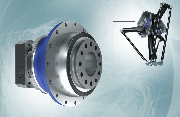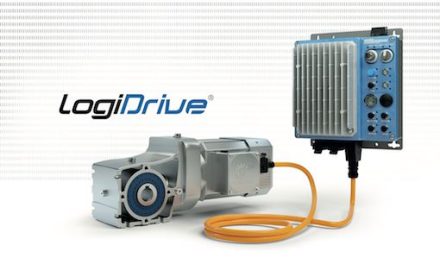 There is no standard application for delta robots, therefore a number of different aspects need to be taken into account before the optimal gearhead design can be decided
There is no standard application for delta robots, therefore a number of different aspects need to be taken into account before the optimal gearhead design can be decided
For almost a decade, Wittenstein has been designing transmission and actuator solutions for delta robots. There is, however, no standard application for delta robots, therefore each will be different. For example, due to the different handling tasks required, robots are needed with two, three or four axes; products and weights will vary; and the pick and place distances may differ.
When developing a solution, account must be taken of the place of installation and the mounting position of the gearheads and actuators, especially in food processing applications. The individual axis drives are subjected to manifold operating loads, and superimposed tilting moments and torques often act on the output. In addition, absolute reliability is essential.
Choosing a transmission or actuator ‘off the peg’ for such an application may therefore not be there best move, and using a company such as Wittenstein to produce a solution can result in a robot that can be pushed to its performance limits, ensuring maximum efficiency.
When designing a drive solution for delta robots, the first step is to analyse the task at hand in the context of any general conditions and constraints. Initial theoretical calculations are performed on this basis in order to map the multidimensional motions in space and determine interactions with other moving components of the robot. Real torques, load data and potential dynamic effects – for instance if the drive system begins to vibrate – are then calculated in detail and optimised with the help of a multibody simulation. It is also important at this stage to identify what are referred to as overload factors and exploit them to achieve extended design and application areas or greater energy efficiency, as well as to downsize the delta robot’s entire drive train. The technically controllable power reserves that are tapped in this way frequently go far beyond the product-specific data contained in the catalogue.
According to Wittenstein, its cymex 3 software package can help with the drive planning process for a delta robot progresses. This sizes the application, motor and gearhead – that is to say, the complete mechatronic drive solution – according to the information generated by the multibody simulation, then simulates and evaluates the efficiency of their interaction.
The result is an optimal recommendation – either a straightforward transmission solution belonging to the TP+ series or a motor-gearhead system in the TPM+ range. Standard and high-torque versions are available.
The company’s modular torqXis sensor system, meanwhile, allows the drives to be monitored when the robots are tested in a real world environment. Here, for example, it is possible to measure torques, lateral forces and temperature directly in the drive train. The actual data obtained in this way is founded on practical operation and can often be utilised to further optimise the gearhead and actuator design.
Washdown solutions
Gearheads from Wittenstein are installed in delta robots from a variety of manufacturers, and the company has recently introduced an easy to clean hygienic TP+ washdown gearhead specifically for delta robots in the food processing industry. The company also produces washdown gear reducers, designed for when environmental conditions demand a higher level of protection, and corrosion resistant
Wittenstein Enter 214
T: 0870 844 0120


